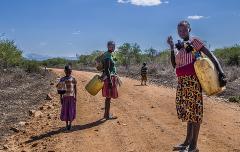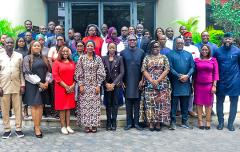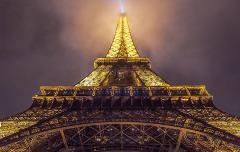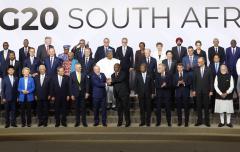UN's Kandeh Yumkella: 'we will raise $120bn to halve energy poverty'
The energy UN under-secretary general says funding and collaborating are key to giving renewables a fighting chance
As head of the Sustainable Energy for All initiative (SEforALL), you have been invited to join the discussions at World Water Week. How important is it to look at energy and water together?
It is crucial; they are two sides of the same coin. We need energy to make clean water available, provide proper irrigation systems and to recycle water. At the same time you need water for cooling and for generating energy.
The energy sector accounts for 25-30% of water extraction from freshwater systems and energy demand will increase 50-60% over the next 25 years. So if we are going to demand more energy it means we are going to extract more water.
The reasons for joined-up thinking seem obvious, so why have the sectors remained separate for so long?
Natural inertia and only thinking – and innovating – in their own narrow fields.
There are only a few countries that have demonstrated successful collaboration. Israel, for example, has always looked at energy, food and water together: this is where the drip irrigation technology comes from. To a certain extent the Brazilians are also making progress, but these knowledge systems need to impact the rest of the world, especially where population will be rising the fastest.
Collaboration is easy to talk about, but how do you actually make it happen?
For the water and energy, what we have done in the post-2015 agenda is to propose “nexus” targets. In the case of energy, we now have goal seven: access to affordable, reliable and sustainable energy services for all. It has three targets, but we originally submitted seven. Four of those targets were all nexus targets relating to water, health, women’s empowerment and food. This was intended to force global leaders to realise that they can’t treat these issues in silos anymore. In the negotiations they have adopted three; we believe that the rest will be adopted as indicators. This means we are forcing development thinking to be joined up.
We also need to work at building capacity in developing countries where these issues will be most serious, but they also have the opportunity to leapfrog. How do we ensure that they build their capacity so that when they are doing urban design policy, for example, the energy minister and the water minister are sitting together?
'Nexus' policymaking recognises complexity. Is there a sense within those working specifically in the energy sector that this approach might slow down progress on specific issues?
Yes, and it does becomes more difficult. For example, it slows down the process of design because it requires more thought. In some cases it also makes the coordination more difficult: it means you have to work among many players and many ministries with three complex issues. So, yes, it will slow down progress. However, this is why you need good technical and global institutions that can spread best practice.
It is a bold choice to pursue but we have to be bold. So far we have made progress with the sustainable development goals (SDGs): we finally got a goal on energy. So we forced leaders to think about the issue. Remember there was no mention of energy in the millennium development goals – it was as if we took energy for granted.
Later this month the Climate Summit will be kicking off in New York. Do you have any specific plans for it?
We will be presenting a concrete plan, alongside commercial banks and some development banks, to raise $120bn (£74bn). We will share how we will do it and how it will happen within the climate finance package. How do we raise the first $120bn? We have six instruments that have been developed. One example is how we scale up green bond finance instruments, from the current $23bn a year to maybe $50bn or $60bn a year.
Also, thanks to the EU and US, we will announce there that we have a plan to reduce energy poverty by half, by 2030 or 2035. The EU has committed, along with the German government, to support 600 million energy-poor people with modern energy services. The Americans will also announce another $100m in Africa. If the US and the EU fulfill their commitment, we will reduce energy poverty by half.
With the SDGs and COP 2015 in Paris on the horizon, the next year will be decisive for energy. What are your hopes for the year ahead?
I have high hopes for the Paris conference, I know we will get a deal. Although, whether it will be the transformative deal we all dream about – that will keep us below 2 degrees – remains to be seen.
We know we need a lot of money. We estimate we need $600-800bn a year to achieve the three targets of SEforALL. Remember that today other energy technologies enjoy $500bn a year of subsidies. How much went into renewables? $80bn. Can we level the playing field a little bit to give alternative energy a chance?
Kandeh Yumkella: Photo credit: Thomas Henrikson
High-Level Ministerial Panel, photo credit: World Water Week 2014
SEforALL Note: This story was originally published by the The Guardian and can be found here



